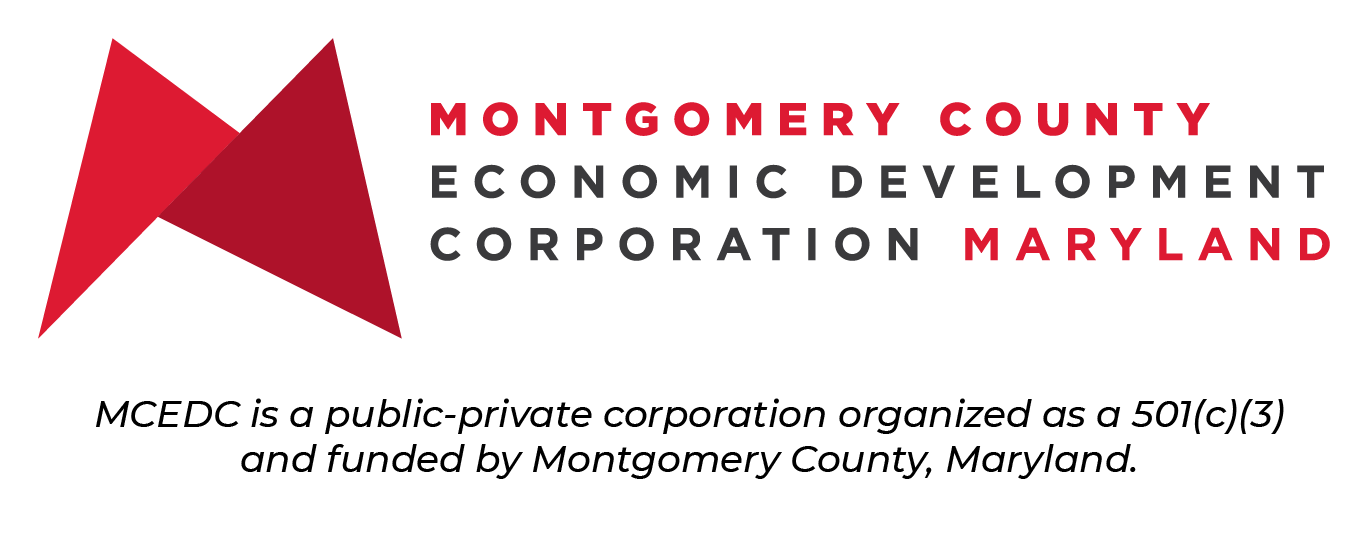Drive in any direction on I-270, a major thoroughfare in Montgomery County, Maryland, and it soon becomes evident that you’re in a booming life sciences hub. The campuses of global and national life sciences companies undertaking groundbreaking and life-saving research and cures are located throughout the corridor. Close to the nation’s capital, Montgomery County is the largest and wealthiest county in Maryland. It also anchors the BioHealth Capital Region, making it a premiere location for life sciences companies to locate and expand. Last year alone, $820 million was invested in Montgomery County life sciences companies. More than 300 such companies have operations in the county, specializing in immunology, cell and gene therapy, biopharmaceuticals, research and development and manufacturing, employing about 26,000 workers. That’s 65% of the total biotech workforce in Maryland.
Montgomery County also has an exceptional and diverse talent pool to choose from. Maryland has the highest concentration of STEM jobs in the U.S. and ranks second in the country for professional and technical workers. More than 30% of adults in the county have master’s degrees or higher, and 60% have a bachelor’s degree or higher. What’s more, the National Institutes of Health, the Food and Drug Administration and 36 federal labs call Montgomery County home. As leaders in the region prioritize upskilling and nurturing talent pipelines, critical partnerships like the one between BioHub Maryland and the National Institute of Bioprocessing Research and Training (NIBRT) reinforce this community’s dedication to fostering a highly trained workforce. A recent agreement establishes BioHub Maryland to serve as the exclusive provider of NIBRT-licensed training in the national capital region. “Life sciences companies can tap into one of the largest concentrations of PhDs in the country here,” says Matt Brady, principal and executive vice president at Rockville-based Scheer Partners, a corporate real estate firm with a Scientific Real Estate Services practice.
They can also tap into an advantageous real estate market in the region, Brady says. “In Rockville and Gaithersburg, which are two of the major cities on the I-270 life sciences corridor, you have 1.2 million square feet of space you can grab in varying sizes. Being a tenants’ market, companies can step into a new building or second-generation lab space. I’ve been doing this about 20 years with a focus on the scientific market, and this is one of the best markets I’ve seen from a tenant’s perspective.”
Next-Generation Cell Therapy
AstraZeneca announced plans in February to establish its newest manufacturing facility in Montgomery County, where it already employs 4,500. The biopharma giant is investing $300 million to turn an existing building in Rockville into 85,000 sq. ft. of space for production of T-cell therapies for cancer treatments. The building is less than five miles from one of its global R&D centers.
“We are incredibly excited that more than 150 new highly skilled jobs are being created to bring our scientific work and therapies to clinical trials, which could transform the lives of patients around the world,” said AstraZeneca Executive Vice President of Global Operations & IT and Chief Sustainability Officer Pam Cheng in a company statement. “This new $300 million investment will accelerate our ambition to make next-generation cell therapy a reality, ensuring that we are ready to scale and meet the demands of patients.”
In December, AstraZeneca leased a 198,000-sq.- ft. building in Gaithersburg, where it employs 3,500, from Matan Companies at a 44-acre life sciences campus facing the I-270 Biotech Corridor.
Also in December, Montgomery County executives and United Therapeutics Corp. announced a partnership that ultimately will expand the company’s footprint in downtown Silver Spring, increasing its space there by 40%. The $100 million deal involves transferring ownership of county-owned facilities to United Therapeutics and vice versa so that the medical technology company, which develops pharmaceutical therapies and technologies that make transplantable organs more available, can expand its downtown campus.
“The partnership and agreement will provide significant benefits to county residents, usher in an era of economic growth in Silver Spring, and further solidify Montgomery County’s leading biotech, life sciences and research economy,” said County Executive Marc Elrich in a statement.
Lab Space Is the Differentiator
Scheer Partners’ Matt Brady tells Site Selection that lab space differentiates Montgomery County, Md. The DC-Virginia-Maryland market is home to about 15 million sq. ft. of commercial lab space. “About 75% to 80% of that is in Montgomery County,” Brady says.
“Office space and industrial space and other asset classes become more of a commodity,” he explains, “and you can find that in other places. This market, to me, is about scientifically focused lab space.”
The firm looks at markets for clients with a four-pronged approach. First, they look at where the ideas for science-based companies are generated — the intellectual property; where capital is coming from and whether it is available as funding; whether there’s a strong talent pool to support these companies; and if there are spaces available to them.
“There are markets that have two or three of those four, but they just don’t grow,” Brady says. “They don’t grow because they’re missing that last piece. We are fortunate here in that we have all four of those — maybe not to the extent that Boston-Cambridge does. But you have to pay a lot more to be there than you do to be here. There’s a substantial cost savings.”
This article was originally published in the 2024 March issue of Site Selection magazine.

